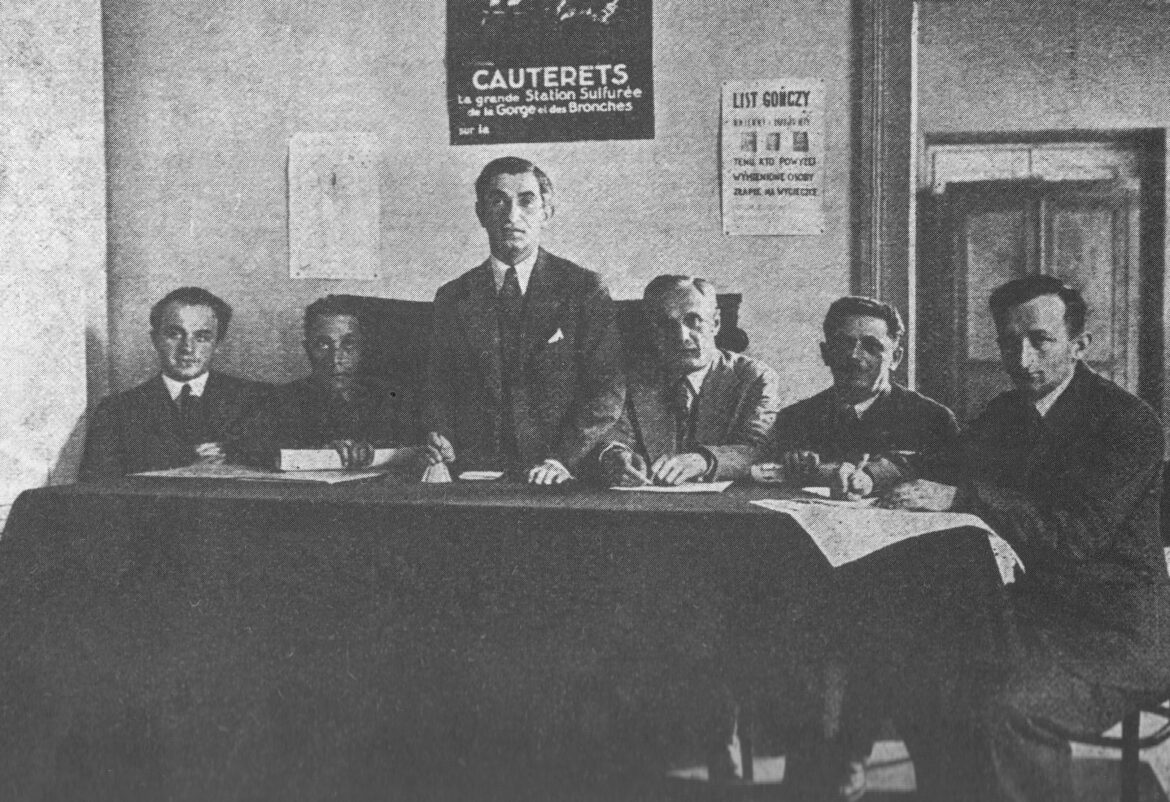The Jewish historian and social activist, Emanuel Ringelblum, continued to do the work he had been doing before the outbreak of the conflict, even during the Second World War. He helped people in need and meticulously documented German atrocities against the Jews.
Emanuel Ringelblum was born on 21 November 1900 in the town of Buczacz. Those Polish territories, where he grew up, were then part of the Russian Empire. 14 years after his birth, the First World War broke out. Emanuel’s family feared Russian troops who were organising pogroms against the Jewish population, so they decided to move to Nowy Sącz.
Jewish historian and community activist
Ringelblum left Nowy Sącz for Warsaw in 1922 to begin studying history at the University of Warsaw. He attended classes and lectures led by eminent Polish historians, including Marceli Handelsman, Jan Kochanowski-Korwin. However, his master was Ignacy Schiper – one of the leading Jewish intellectuals in Poland in the interwar period.
Five years after starting his studies, Emanuel presented his dissertation on the fate of Warsaw’s Jews in the Middle Ages. The history of Warsaw’s Jewish community became Ringelblum’s speciality. He wanted to publish another work on the subject – covering the years 1527-1795 – but the outbreak of the Second World War interrupted his research.
Ringelblum believed that Jewish history should not be studied in isolation from the fate of Europe and the world. In his view, the history of the Jews in Poland was linked to the history of Poland, and these issues cannot be treated separately. He was aware of the conflicts that existed between the Jewish and Polish communities, but in his opinion, it was a mistake to view Polish-Jewish relations solely in the context of anti-Semitism. In his view, tensions and conflicts between the two peoples were born out of misunderstandings and a lack of knowledge of the two groups about each other. He postulated the dissemination of Jewish history to help mutual understanding and conflict resolution. The historian loved the Yiddish language, Jewish culture and folklore. He also borrowed from Jewish folk tales in his scholarly work.
The future creator of the “Ghetto Archive” was heavily involved in Jewish social and scientific life. Among other things, he was one of the founders of the historical section of the Jewish Scientific Institute in Vilnius (the city was then in Poland). He was also working for the Central Interest Free Bank (“Cekabe”), which was financed by the American Jewish Joint Distribution Committee (Joint). He worked mainly as a teacher, but in 1938 he gave up this profession to devote himself entirely to social activities. Ringelblum became a full-time employee of the Joint. In the late 1930s he was involved in helping 6,000 Jews persecuted by the Nazis in Germany. The war and German anti-Jewish policies were inevitably approaching him.
Documenting the fate of the Jews in the Warsaw Ghetto
Just before the start of the Second World War, in August 1939, Adolf Hitler and Joseph Stalin made a joint pact. When this information reached Ringelblum, he left the Zionist Congress in Geneva and returned to Warsaw. After Germany invaded Poland, he immediately became involved in helping people in need. Unfortunately, the joint attack by Nazi Germany and the Soviet Union ended with the occupation of Poland. Warsaw, where he lived, was taken over by the Germans. The Nazis began persecuting Poles and Jews in occupied Poland. For the latter, they organised ghettos, where they forcibly placed the Jewish population. The ghettos were dominated by crowding, disease, starvation and death. Ringelblum found himself in such a place in Warsaw in November 1940.
Even in the ghetto, Emanuel was involved in organisations that helped the needy people (e.g. the Central Relief Committee, Jewish Social Self-Help). He was also associated with the Jewish Fighting Organisation, which sparked the anti-German uprising in the Warsaw Ghetto in April 1943.
His most important activities, however, were carried out within the framework of an organisation that was founded on his initiative – Oneg Szabat (“The Joy of the Sabbath”), which was the origin of the Ringelblum Archive as it is known today. He managed to persuade representatives of the Jewish intelligentsia, writers, teachers and community workers to help him document what was happening in the Warsaw Ghetto and beyond. His associates collected a variety of material: from writings, leaflets and posters to restaurant menus, tram tickets or candy wrappers. They studied social relations in the ghetto and the organisations operating there. They dealt with the phenomena of corruption, the prevailing hunger, the omnipresent diseases. They also focused on demography, religious, economic and cultural life. They researched the Jewish resistance movement and Jewish relations with Germans and Poles. Above all, they documented the Holocaust – the extermination of the Jewish population by Nazi Germany. They created a unique archive of the Warsaw Ghetto, which covered the period from October 1939 to April 1943.
Escape and arrest
Ringelblum escaped from the ghetto in February 1943. However, he kept returning there to rescue others and bring help to people in need. He also got there the day before the outbreak of the Warsaw Ghetto Uprising. Once, nobody heard of him and it turned out that the Germans arrested and deported him to the German forced labour camp in Trawniki. The Polish and Jewish underground, however, took effective action to get him out of there.
Ringelblum was reunited with his family after his release. They all found shelter in the “Krysia” bunker on Grójecka Street in Warsaw. There, Emanuel continued his work as a historian and described the tragedy of the Jews. Unfortunately, the German secret police, the Gestapo, discovered the hiding place on 7 March 1944. It was probably revealed by an 18-year-old Pole, who was shot for it by the Polish independence underground. The Jews sheltering in the bunker were taken to the “Pawiak” prison. They were probably killed three days later. Emanuel Ringelblum died together with his family.





